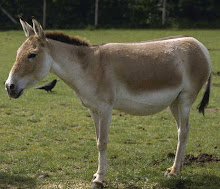 <- 1985="" aral="" as="" br="" from="" in="" s="" sea="" seen="" space="">
<- 1985="" aral="" as="" br="" from="" in="" s="" sea="" seen="" space="">With the ever worsening smog in Almaty, the nuclear contamination around Semey and pollution and overfishing in the Caspian Sea, good news on the Central Asian environmental front is a welcome change. In early April, both the New York Times and the Washington Post reported that a World Bank-funded project to restore waters to the Aral Sea, long considered possibly the biggest environmental disaster of all time, is not only successful, but ahead of schedule.
The Aral Sea, shared by Uzbekistan and Kazakhstan, was once the 4th largest inland body of water in the world. It supported a vibrant fishing industry, and the wetlands formed by the deltas of the Amu Darya and Syr Darya rivers teemed with animal and plant life. The Syr Darya begins from Himalayan glaciers in Kyrgistan and Tajikistan, and flows northward from the mountains through southern Kazakhstan, passing Kyzlorda and Baikonur Cosmodrome before emptying into the northern Aral. The Amu Darya flows from Afghanistan through Turkmenistan to Uzbekistan and the southern end of the Aral.
The Aral Sea began to shrink in the 1960s when massive Soviet irrigation canals diverted 95% of the water in the two rivers to cotton fields in Uzbekistan and Kazakhstan. Between water lost to evaporation, and the lack of fresh water to replace it, the Aral had lost 75% of its surface area by 1996. The water became too salty for fish, the dry sea basin blew away in fierce dust storms, weather patterns in the area changed. The port cities of Aralsk (Kazakhstan) and Muynak (Uzbekistan) became stranded more than 50 miles from the coast. Water levels are so low that the sea has split into two, the small North Aral (entirely within Kazakhstan) and the larger South Aral.
The World Bank project is focused on saving the North Aral, and consists of improving the efficiency of the irrigation canals, and an 8-mile dam which was completed last summer. With more water flowing into the sea, the salinity drops, the water rises and reclaims the desert. Project coordinators originally expected the sea to fill in 5 to 10 years, but the canals had been so wasteful of water that improvements made a much bigger and quicker difference than anticipated. Perhaps someday Aralsk will again be a city by the sea.
Background and More Information
• Map of the Aral Sea and Surrounding Areas
• New York Times & Washington Post Articles (April 2006)
•Northern Aral Sea Fills Up Ahead of Schedule as Part of World Bank Project
(February 2006)
•The Aral Sea (The Water Page, 2001)
•International Response to the Aral Sea (Eurasia.net, 2000)
•Release the Rivers: Let the Volga and the Ob Refill the Aral Sea
(cached version from the Internet Archive)
(Proposal to Save the Southern Aral)

3 comments:
Where is the article:
Release the Rivers: Let the Volga and the Ob Refill the Aral Sea
Dr Sc, MSc, MBar,
As an interested Scientist and Emeritus OProfessor in Environmental Sciences I see this as a main stepping stone to further enhance learning.
Hi Dr. Lim -- You may have noticed that the blog isn't updated any further, and this post is from 2006. Much has changed in the efforts to save the Aral Sea in the past 12 years. It seems that the Ecoworld.com, the original site of the article you referenced ("Release the Rivers"), has disappeared without a trace. However, I was able to find a link to a cached version of the article at the fabulous Internet archive.
You should be able to retrieve the article at this link:
https://web.archive.org/web/20080429235809/http://www.ecoworld.com/home/articles2.cfm?TID=354
Post a Comment